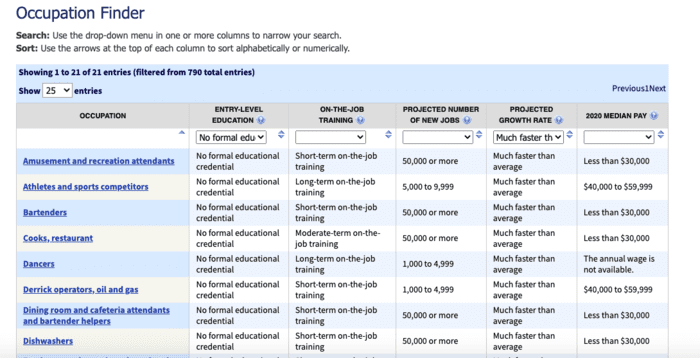Starting a business is a challenging endeavor that requires time, money, and continuous learning. In our blogs, we cover how to start a business with brief overviews. In our hub, we aim to provide you with everything you need to go through each step. Our first step is conducting market research.
Throughout the steps, we’ll provide insights from Paul Akers, the owner of FastCap, and a Lean Expert who has created hundreds of products for woodworkers and cabinet makers.
There are four basic steps to conducting market research:
- Understand “what is marketing research and which type is right for my business?
- Perform market research.
- Analyze the data.
- Use the research to make decisions.
We’ll start by exploring some of the concepts involved in market research analysis to help you perform it yourself.
Step 1: What is market research in business?
Market research is the process of gathering information about target customers to better understand their views about a product or service. The primary ways of classifying market research are:
- The method of the collection
- Common types of market research
Let’s look at each.
The method of collection
Market research normally uses six methods of collection when looking for answers:
- Primary market research
- Secondary market research
- Qualitative research
- Quantitative research
- Exploratory research
- Specific Research
Let’s look at each.
Primary market research

Primary research is the original research conducted directly by an organization. It is used to find out what customers are interested in. It can be done through questionnaires, interviews, or videos. Primary market research is used for understanding the underlying needs and desires of consumers.
Primary market research helps us to understand the needs, wants, and behaviors of potential buyers. It is the basis for the buyers’ persona. It helps us to formulate marketing strategies that can be used to meet those needs and wants.
Secondary market research
Secondary market research is a process of finding information about a product or service through other sources. This includes looking up other companies that are in the same market as your company and finding out what they are doing.
A company should conduct secondary market research to find out if the product or service has been done before, which will help them figure out how they can differentiate their product from competitors.
Secondary research can be used to gain information about competitors, pricing, distribution channels, etc. It also helps the company save time by not having to conduct primary research that has already been performed.
Researching competitors before you start your business is not only crucial for success but essential for survival in the business world where everyone is trying to get ahead.
What is the difference between qualitative and quantitative research?
One is focused on themes while the other is focused on information that can be processed numerically. Let’s look at each.
Qualitative Research
Qualitative research is focused on finding themes that run through interviews and surveys. This type of research is more focused on opinions and is more art than statistical analysis, but in some cases, you can turn this type of research into data that can use statistical analysis.
For instance, a question like the one below converts a qualitative data point into a quantitative data point, making it easier to compare how happy someone was with their food.

You might perform qualitative research along with market validation after you have created a prototype of a new product.
Quantitative research
This research is focused on information that can be easily processed with statistical analysis software. For instance, median household income would be easy to statistically calculate if you gather the data for the target customers’ income. Market research analysts love this kind of data because it is easier to process.
Exploratory research
Exploratory research is market research that looks for a better understanding. For instance, you may have come to this site doing exploratory research about how to do market research for a startup. After you’ve gained broader information about marketing research methods, you might move on to more specific research.
Specific research
Specific research is when market researchers are looking to answer a very specific question using market data. This research might include searching for a specific concept or item. For example, the lowest cost statistical software for a company that will have ten users of the software. You might also want to research the history of a business location before deciding to sign a lease because some shopping centers have high turnover.
To find the answer, you’ll probably want to go with Google Workspace because Forms, Sheets, and other useful business tools are included in the same package as your email. Google is the primary email provider for small and medium-sized businesses.
Market research may include a combination of primary and secondary data, quantitative and qualitative data, exploratory and specific research. Now that you understand the market research definition, let’s look at the common market research methods and what questions they are trying to answer.
Common types of market research methods
Most companies will perform 13 types of market research:
- Literature reviews
- Surveys
- Interviews
- Focus Groups
- Observation
- Customer Utilization Research
- Buyer Persona Research
- Market Segmentation Research
- Pricing Research
- Competitive Analysis Research
- Customer Satisfaction and Loyalty Research
- Brand Awareness Research
- Campaign Research
In each of these, market researchers attempt to answer different questions. Let’s discuss each.
Literature Reviews
One of the leanest ways to do market research is a literature review. With your laptop or cell phone, you can easily find vast amounts of data about your market through sources like:
- Statista – Provides graphs that are easy to process for most economic subjects
- Competitors’ research – Your competitors have probably already done the research. Find it so you don’t have to duplicate the effort.
- Industry trade organizations – Companies
- Think with Google – Helps marketers gather information using Google’s extensive database of consumer behaviors
- Census Bureau – The U.S. Census Bureau is a government agency that collects data on a variety of subjects including a full count of the U.S. population every decade.
After you’ve gathered everything available through market research, it’s time to create some surveys.
Surveys
Surveys are the most common type of market research because they are so easy to conduct and are low-cost. With software like Google Forms and Facebook, you can easily create a survey, distribute it, and analyze the data on your own.
When creating a survey, it is important to be aware of some best principles including:
- Use a variety of style questions: scaled, multiple-choice, and open-ended questions are typically used with success.
- Avoid biased questions that lead the survey participants to a preferred answer. They will harm the validity of your research.
- Be respectful of the participants’ time. Unless you are paying them, try to keep the survey to 10 questions or less. If you are paying them, $50-$100 per hour is typically what market research firms will pay for longer surveys.
- Make sure to gather demographic data and contact information for follow-up.
- Practice proper sampling methods. In most cases, you won’t need more than 1,000 survey participants, but you can use the table below to establish how many people to include in your survey.
| Confidence Level | Margin of Error | Sample Size |
| 99% | 1% | 16576 |
| 99% | 2% | 4145 |
| 99% | 3% | 1842 |
| 99% | 5% | 664 |
| 99% | 10% | 166 |
| 95% | 1% | 9603 |
| 95% | 2% | 2401 |
| 95% | 3% | 1067 |
| 95% | 5% | 385 |
| 95% | 10% | 97 |
| 90% | 1% | 6764 |
| 90% | 2% | 1691 |
| 90% | 3% | 752 |
| 90% | 5% | 271 |
| 90% | 10% | 68 |
You can normally gather the data you need through this method for under $5 per survey participant, making it one of the most effective and lean methods of gathering market research.
Interviews
Another great tool is a market research interview. They follow the same principles of surveys but have the benefit of the ability to ask follow-up questions. Using these with select survey participants who gave meaningful input might be useful.
Interviews are much more labor and capital intensive than surveys, so only use them for follow-up questions for your target market.
Keep reading to learn about focus groups.
Focus Groups
A focus group brings 5-10 people together to discuss a product or service with a moderator. These will typically run $4K-$10K per group, and they are not conducive to being conducted by novices because of the challenges involving focus groups dynamics.
If you are going to use this type of research, we’d suggest hiring a professional market research firm to assist you in the recruiting and managing of a focus group. If you are trying to run lean market research, you should skip focus groups entirely.
Keep reading to learn about observations as a market research tool.
Observation
Observation can be an extremely powerful market research tool. Using observation, you can learn how people actually interact with your product and service, but it doesn’t allow you to actually communicate with them.
Observation is particularly powerful for software products because tools like Google Analytics and Crazy Egg help you see how people interact with the software. This makes it easier to fix areas where customers stop interacting with the application.
You can perform market research through observation in different ways. The primary ways of conducting market research through observation are covert observation and overt observation.
Covert observation is collecting market research data without the participants’ knowledge. This type of data collection can be achieved through analytics software on the web or using security cameras in stores where people can test your product.
Overt observation is when the participants are aware of the marketing research and provide feedback to questions. When you conduct market research about a product or service this way you will get more information about potential customers’ opinions, but it may be influenced by their awareness that you are conducting market research.
Effective market research can gain actionable insights from both methods. Overt observation is better when you know who your potential customers are and you want to establish whether they like your business idea, while covert observation is helpful for establishing who naturally gravitates to a product or service.
You’ll want to take notes any time someone performs a desired or undesired action. If the participant is aware of the market research analysts, you’ll also want to ask them what influenced the decision.
Cautionary Tale: During the early stages of FastCap, Paul would gain actionable insights from conventions, but he stopped conducting research at such events because he found them costly to collect data. He also found that competitors would try to steal his ideas.
To truly make the most out of this tool, you’ll need to combine it with other research methods like surveys to gain user input after the observation.
Customer Utilization Research

Customer utilization research is focused on how your current customers use your products or services. Marketing professionals will normally use customer surveys to perform this exploratory research. The following questions are questions that an online survey might include:
- How often do you use our product or service?
- What do you like most about our product or service?
- With 1 being highly dissatisfied and 5 being highly satisfied how would you rank our product?
- What do you like least about our product or service?
- With 1 being highly dissatisfied and 5 being highly satisfied how would you rank our customer service?
- Have you tried any of the competitors’ products? If so, which ones? How does our product compare to theirs?
- What features would you like added to our product?
- With 1 being highly dissatisfied and 5 being highly satisfied how would you rank our pricing?
You can replace “product” with “services” in any of the questions above. In addition, it would make sense to include the name of the specific product or service they bought instead of the word product or service.
These questions will help you establish what real customers think of your products and services. This type of market research data provides insight into aspects including competitive advantage and creating buyer personas for potential clients based on the data collected.
FastCap has an interesting take on this type of market research. They actually offer tradesmen a 2-5% royalty for product suggestions that they decide to take to market.
Buyer Persona: Identify Your Target Market
A user persona is a character that represents your target market. A user persona will include aspects including:
- Demographics – age, gender, location, marital status, number of kids (if applicable to your product)
- Financial Information – Employment status, job title, household income, homeowner status
- Behaviors and Interests – Hobbies, products they like, buying habits, where they get information about products and services
- Market size and market trends
You can create similar personas for B2B businesses using stats like:
- Number of employees
- Industry
- Revenue
- Age of company
- Titles of decision-makers
- Market size
If you are using analytic tools, they collect most of this information. You can add a form to check out or that opens when the user is leaving the site to ask questions about:
- Who are they? In FastCap’s case, they would be carpenters and cabinet makers.
- What are they trying to achieve? They don’t want exposed screw holes in their cabinets.
- What is the main obstacle? The products on the market are ugly, difficult to use, and expensive.
What if you find that your buyer persona is too broad to use to identify potential clients? We’ll discuss how to address that next
Market Segmentation Research

A small business might need to do market segmentation research if all their clients don’t fit neatly into a single user persona. For instance, FastCap would have at least three market segments that they might want to prepare marketing materials for:
- Distributors that will be selling their products to carpenters
- Tradespeople who will be using their products
- Coffee shops that buy caps for drinks so people don’t burn themselves (it’s an ancillary use for a FastCap that he decided to market to restaurants with To-Go cups)
As you can guess, each market segment would have characteristics that make them different, and you wouldn’t want to market to them all the same. You’d use market segmentation research to identify what those key characteristics are and create a user persona for each.
Pricing Research
The term pricing research is refers to establishing a fair price. Pricing research should be done before you open a business or launch a new product because it can impact whether the business is worth starting.
To understand the benefits of pricing research I should discuss pricing strategies first. Businesses normally use either the value-added method or the cost of doing business.
The value-added method charges a price that is based on the value that is provided to a client. An example of this pricing is how Tesla prices solar roofs. They determine the price using the cost of a comparable roof plus the net present value of 30 years of energy in the target market.
The cost of doing business is calculated by adding up all your expenses (including taxes) and adding the amount of profit you want to make, then dividing by the number of units you want to sell.
Both of these pricing strategies have issues though. In the value-added method, how do you determine the value that is added? In the cost of doing business method, what is the maximum your target market can sustain? Both of these are answered by researching comparable products.
While there may not be something identical on the market, there is always something that serves a similar purpose. For instance, when portable MP3 players were created, the cost of the MP3 player plus downloading songs should have been compared to the cost of a portable CD player plus the cost of all the CDs.
Competitive Analysis Research

Competitive analysis research is focused on developing a thorough understanding of the market and identifying how you want to differentiate yourself in a market of comparable competitors. This type of research will be included in a business plan. You’ll want to focus on aspects of the industry including:
- Identify competitors and the products they offer. This can be done through their websites.
- Analyze sales trends. You can use industry resources and company quarterly reports.
- Research how economic indicators impact the industry. For instance, consumer staples tend to do better during a recession, while consumer discretionary products tend to do better as an expansionary cycle matures.
- Understand the impact government agencies have on the industry.
- Has the industry reached market saturation? If 9 out of 10 people have already purchased the product you are selling, you are probably late to the game. Before you spend money in an industry that is at capacity, you should review the following bullet point.
- What is the job outlook for the industry? The Bureau of Labor Statistics (BLS) creates an occupational outlook handbook for every industry. You want to be aware of the growth prospects. If both of the last two bullet points are going in the wrong direction stay clear.
The document you create from this research should be detail-oriented, contain lots of external links to prove sources, and show analytical skills that show an understanding of the industry. This research and the communication skills used to present it are often deciding factors when applying for loans.
Customer Satisfaction and Loyalty Research
Customer satisfaction and loyalty research are focused on building relationships that increase the lifetime value of your existing customers. With big data and rewards programs becoming more affordable, small business owners can now offer similar types of rewards to what people see at major chains.
You’ll want to use the market research process to establish the answer to questions like:
- Should I use a point system or a number-of-purchases reward system?
- How big of a reward should I offer for repeat customers?
- Should I offer referral bonuses? If so, how much is meaningful?
- What are my competitors doing?
To answer these questions, you’ll need to establish:
- How often your average customer buys your product or services. You can find this in Customer Relationship Management (CRM) software. Alternatively, you can sort receipts by credit card if you don’t already have an app or loyalty program that people sign up for.
- If you have a CRM, establish what percent of customers interact with your business daily, weekly, monthly, or irregularly. Also, calculate the first two bullet points for each group to see if different promotions make sense.
- How much your average customer spends on each trip. Calculate revenue or number of receipts.
For example, you might target people differently by offering daily customers a free upgrade every $50 spent, while weekly customers you might want to offer every 5th visit they get a free product. In both scenarios, this can reward customer loyalty and encourage more spending in the future by slightly shifting their habits.
Let’s look at how to understand brand awareness.
Brand Awareness Research

Brand awareness research is focused on establishing what your target audience knows about your business, how they perceive it and giving you input on improving brand awareness.
Facebook has a feature for brands running ads that is really useful for establishing brand awareness called Brand Survey Tests. It is currently an experimental stage, but here’s how it works:
- Divides target market into two groups, one that is shown ads and one that is not shown ads.
- Collects data on both groups’ clicks, purchases, and other actions with your company
- The ones that are shown ads will be shown a survey a couple of days later that asks up to three of the following questions:
- Required: “Do you recall seeing an ad for [page name] online or on a mobile device in the last two days?”
- “Have you heard of [page name]?”
- “How would you describe your overall opinion of [page name]?”
- “Are you familiar with [Page name]?”
- “Will you recommend [page name] to a friend?”
- Provides an analysis of what the market research process found.
This can be a great tool for understanding if people recognize your brand name.
Campaign Research
Campaign research is focused on reviewing past business strategies to promote your products and services so that you can establish what worked, what didn’t, and why. In today’s marketing boom, people often forget the importance of including lessons learned when closing a project.
During this process, you’ll want to look at questions like:
- Did we reach enough people to be a representative sample? Typically, over 500 will be enough to count as a representative sample,
- What was the return on investment?
- Where did people drop out of the sales funnel?
- Did the campaign have a favorable reception?
- Should we try to duplicate the content in future campaigns?
- What should we avoid in future campaigns?
Now that you know about some of the types of market research techniques, keep reading to learn why market research is so important.
Why is market research important?
Because market research is the act of investigating consumer preferences as well as economic, social, and statistical data, it helps to better understand the customer and guides business decisions in the areas of:
- Customer insights – Market research can be used to gain insight into how customers behave, what they like and dislike about products, and what they think about different marketing strategies.
- Marketing strategy development – Market research can be used to develop a marketing strategy by identifying the needs of the market, target audience, and competitors in the industry.
- Product development – Market research is key for product development because it helps companies discover what customers want to buy or use next. It also helps companies see how their product will fare against other similar products on the market today or in the future.
- Product pricing considerations – Market research helps companies determine prices for their products by understanding expenses to continue production.
Now that you understand why market research matters so much to businesses, let’s take a look at how to conduct market research.
Step 2: Conduct market research
As you begin to get a handle on your goals and the questions you need to answer, it’s time to do the market research. At UpFlip, we are fans of Lean methodologies, so we figured we’d give you an introduction to lean market research.
- Put together the list of questions you are trying to answer based on the previous sections. Structure them in a way that answers can be analyzed easily.
- Seek out data that is already available and document the findings that impact you under each question.
- Establish the minimum number of online surveys or observations needed for a statistically accurate sample using our calculator.
- Find participants and gather data. When possible use software for collecting data.
- Proceed to analyze data.
- Implement business strategies.
Using these strategies will make it easier to do effective market research quicker and at a lower cost. No need for costly market research analysts.
If you’d like to learn more about how one of the United State’s most successful Lean practitioners approaches market research check out our interview with Paul below.
Keep reading to learn about analyzing the results
Step 3: Analyze the results
Market research analysts look for trends in data gathered from market research. The analysis involves both statistics and looking for patterns. To make it easier to analyze data, it is helpful to use software while gathering the data. If you don’t, you’ll have to input it into a spreadsheet manually.
The first step is to clean up data. This means fixing misspellings and other improper collection like zip codes where state names should be. Next, remove obvious deviations from the sample. (If someone says they buy your products 100 times per day, that’s probably not right.)
After that, you can do data analysis using functions like:
- Mean – sum divided by the number of surveys
- Median – (Number of surveys+1)/2
- Mode – Most common answer
- These can also use conditional statements such as “IF male and Under 45 mean”
With some forms of data, you might find visualization easier, so we are providing some market research examples of visualization of data. Let’s look at some common visualization methods.
Flow Model

The flow model is simply a visual representation of how interactions occur. Check out the behavioral flow for website visitors in Google Analytics. This model can be useful for establishing where issues occur and how processes work.
Affinity Diagram
An affinity diagram is used to group people, businesses, or other items together by a common feature. For instance, you might group by male and female, profession, or age. This can make it easier to tell whether one group tends to prefer your product or service more than another group does.
If you want to learn how to do this in Microsoft Excel, check out the video below.
Lucidcharts is another software you can use for affinity diagrams.
Customer Journey Map
A customer journey map is a visual representation of the path people take from being unaware of your product to becoming a paying customer, and eventually a potential advocate. Customer journeys are typically broken into five steps in the process:
- Awareness – The customer knows about the product
- Consideration – When the customer starts researching the product
- Purchase – The customer buys the product
- Retention –Keeping the customer happy, repeating purchases
- Advocacy – When the customer goes from being a satisfied customer to singing your praises to others.
The stages can vary for different groups of people, but awareness is typically a matter of advertising. This can be in the form of an online ad, a coming soon sign when preparing to open up a location, or even current customers (or influencers) advocating for your brand.
Consideration begins when the customer starts researching your company. This phase might be:
- Short: Searching “gas stations near me” and immediately going to get gas
- Long: Spending hours researching the best shoe, best price, and best place to buy it.
The point of understanding a journey map is to be able to understand how many points of reference a person has before buying your product. Then you can use that to speed up the awareness and consideration phases while encouraging advocacy by your long-term customers.
Now that you understand “what is market research?” how to perform the market research, and how to analyze the research, there’s only one thing left…
Step 4: Use the info for decision making

The final and most important part of performing your own market research is converting the research into business practices to improve revenue. Depending on what you find in the research, this step may include:
- Adding new user personas and marketing campaigns
- Narrowing your target audience
- Discontinuing marketing campaigns
- Investing in software to increase customer loyalty or lifetime value
- Documenting the planned strategies for a business plan
- Rejecting the business idea completely
Thank you for reading!
Wherever the research leads you, UpFlip is here to help you run a better business. We use your feedback to create content that helps you build a better business. Which sections of this did you find beneficial and which would you like to learn more about?




